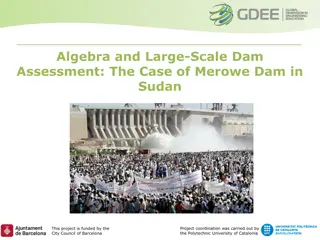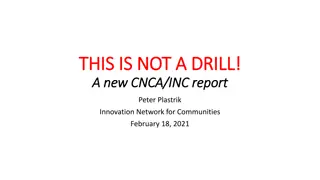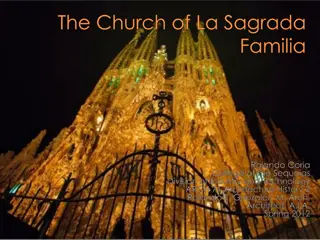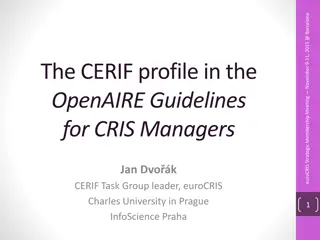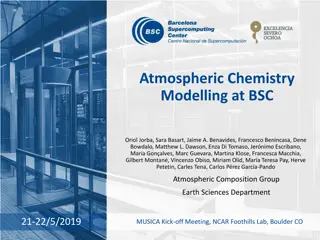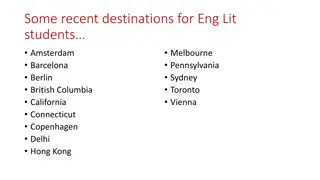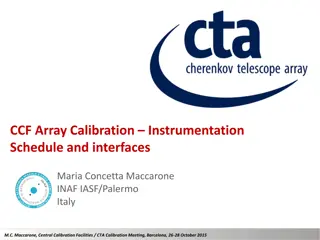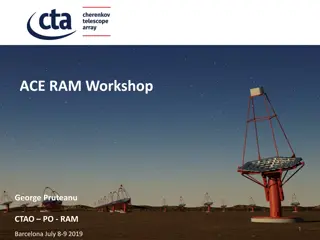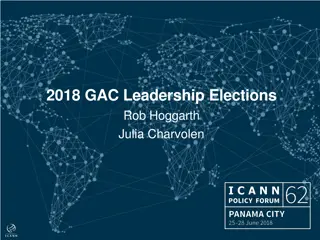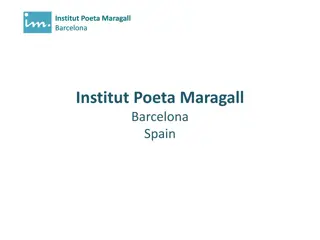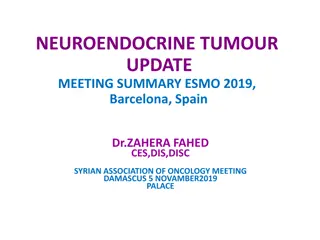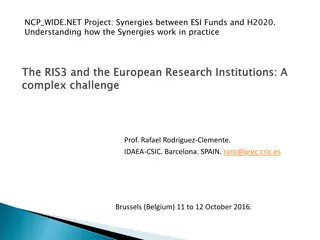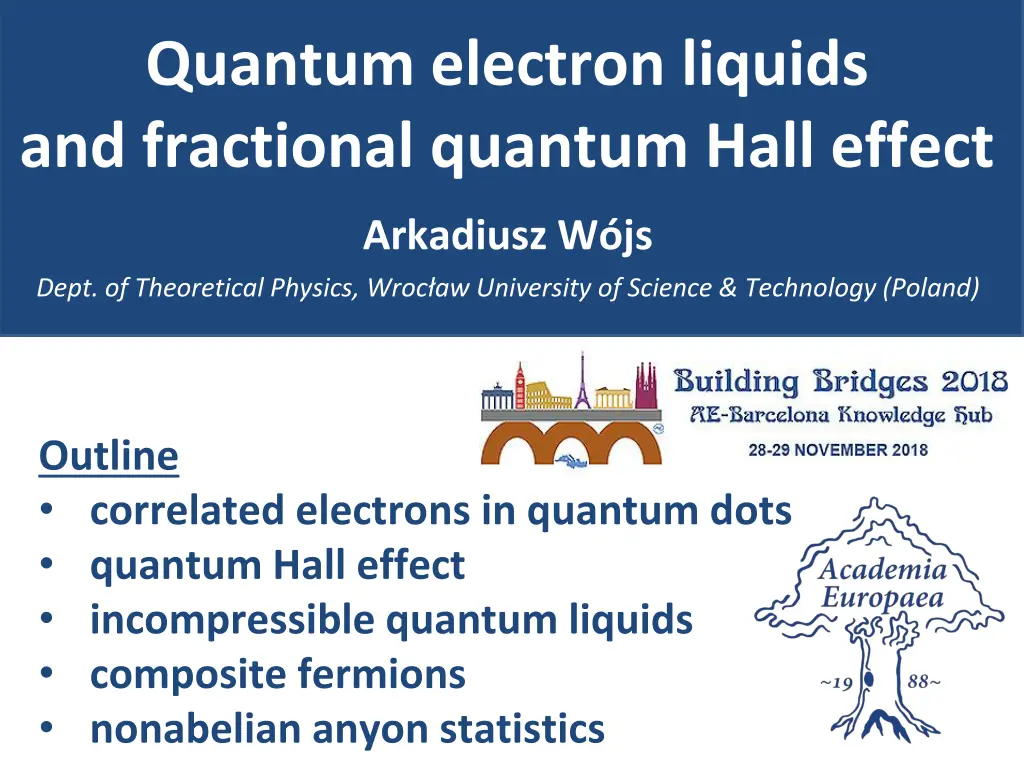
Quantum Electron Liquids and Fractional Quantum Hall Effect Overview
Explore the fascinating realm of quantum electron liquids, fractional quantum Hall effect, and correlated electrons in quantum dots. Delve into topics like incompressible quantum liquids, composite fermions, nonabelian anyon statistics, and more. Discover the intricate world of quantum dots and their spatial confinement, electron wave quantization, and strong correlation effects. Uncover the essence of the Hall effect in magnetic fields, the quantum Hall effect, and topological phases of matter. Journey through the realms of mathematics with a focus on topology and its applications.
Download Presentation

Please find below an Image/Link to download the presentation.
The content on the website is provided AS IS for your information and personal use only. It may not be sold, licensed, or shared on other websites without obtaining consent from the author. If you encounter any issues during the download, it is possible that the publisher has removed the file from their server.
You are allowed to download the files provided on this website for personal or commercial use, subject to the condition that they are used lawfully. All files are the property of their respective owners.
The content on the website is provided AS IS for your information and personal use only. It may not be sold, licensed, or shared on other websites without obtaining consent from the author.
E N D
Presentation Transcript
Quantum electron liquids and fractional quantum Hall effect Arkadiusz W js Dept. of Theoretical Physics, Wroc aw University of Science & Technology (Poland) Outline correlated electrons in quantum dots quantum Hall effect incompressible quantum liquids composite fermions nonabelian anyon statistics
Quantum dots Nanoscale objects containing small and controlled number of electrons (also called artificial atoms ) e- e- often made of semiconductors (various methods) from few to 100 atoms (different shapes) N a few tens of electrons coupling to environment (electric, magnetic,optical, mechanic) e- e-
Quantum dots spatial confinement & electron wave character quantization (discrete energy levels) a shape/symmetry shell degeneracy Hund rules (e.g. max L) size, magnetic field, light (electrons & holes) strong & nontrivial correlation effects d p s
Hall effect in magnetic field: Hall effect (1879) Ohm s law ? = ?? ? = ?? ? = ?? ? = ?? ? ?? ?? ? ?? ?? ?? ?? = ? ?? ? ?? ?? ?? ?? = ??
Quantum Hall effect 2D low T high B low/approp. n weak disorder extreme cond s Ohm/Hall law cyclotron energy: ??= ?? ?? ? ??= filling factor: ? = ? ?? ? = ?? ? = ?? Quantization: ??2 ; ???= 0 ???= ? ; ? =?? ? ? ? ? ? ? ? ? = ? ?? ? ?K ?2= 25812.807557(18)
Klaus von Klitzing 80 Quantum Hall effect Klaus von Klitzing High Magnetic Field Laboratory, Grenoble (France) 5 February 1980, 2am topological phase of matter other/related topological states : - topological insulators (HgTe, Bi2Se3) - topological superconductors (Sr2RuO4) ? ; ? =?? ? ? ? ? ? ? ? ? = ? ?? ? ?K ?2= 25812.807557(18)
branch of mathematics concerned with properties of figures unchanged under continuous deformation Topology 7 bridges of K nigsberg (Leonhard Euler, 1735) Euler's polyhedron formula v, e, f = numbers of vertices, edges, and faces Can one cross each bridge exacty once and return to origin? Knots (Peter Guthrie Tait, 1885)
Quantum Hall effect as topological effect Quantization of quantum Hall effect is topological Phase transition not described by spontaneous symmetry breaking In contrast, at low temperature (ground state) symmetry is higher Order parameter: non-local, Chern number (topological invariant) geometry/curvature of Hilbert space
Quantum Hall effect as topological effect Quantization of quantum Hall effect is topological Stokes theorem: ?? ???= ? ?2? Chern number (~total curvature): ??= 2? 1 ??? ? ?2? TKNN (Thouless, Kohmoto, Nightingale, den Nijs) 1982: ???= ??2 (over occup. LLs) Phase transition not described by spontaneous symmetry breaking In contrast, at low temperature (ground state) symmetry is higher Order parameter: non-local, Chern number (topological invariant) geometry/curvature of Hilbert space Gauss & Bonnet (1848): ??? + ???? = 2? ?? Wave vector ? in closed loop Berry phase of Bloch w-fun ??? : ?? ???; ?? ? ?????? For a closed surface: 2? 1 ? ?? = 2 1 ? For torus (2D Brillouin zone): ? = 1 ? = 0 Berry curvature: ?= ?? ??
Quantum Hall effect as topological effect Quantization of quantum Hall effect is topological properties depend on topological invariant (Hall conductance xy ~ Chern number) Phase transition not described by spontaneous symmetry breaking Effect (exact quantization) is independent of: material type of structure sample geometry disorder magnetic field temperature A In contrast, at low temperature (ground state) symmetry is higher Order parameter: non-local, Chern number (topological invariant) geometry/curvature of Hilbert space V VH A
Strmer, Tsui, Gossard 82 Fractional quantum Hall effect Integral QHE: quantization of RH near exact filling of Landau levels Fractional QHE: similar behaviour near certain fractional fillings new physics: quantum liquid, fractional excitations, anyon statistics ? ? 2 2 1 1
Quantum liquid electrons in two dimensions (very thin layer) in high magnetic field (motion further restricted/quantized to LLs) interacting with one another via Coulomb forces at approprate (low) density become strongly correlated and condense into a liquid B new phase of matter: quantum1 liquid2 1 made of quantum particles (electrons) 2 isotropic and incompressible
Fractionally charged (quasi)particles additional electron entering the liquid splits into 3 fractionally charged quasiparticles (the extra electron blends into the liquid, and the excessive local charge shows as 3 new quasiparticles, moving independently)
Fractional and non-Abelian (quasi)particles in 3D: double exchange (P2): Identity Loop single exchange: ? = 1: fermions Pauli exclusion principle ? = +1 : bosons Bose-Einstein condensation in 2D: above argument fails, ? = ??? (anyons) or matrix (non-abelions) topological quantum computation
Particles with memory of trajectory braiding non-Abelions (particles with non-Abelian braid group) time braid/exchange counter-clockwise braid/exchange clockwise final quantum state depends on past trajectories (not only on final positions) application as protected element of quantum memory
Jain 89 Composite fermions 2D electrons + magnetic field degenerate energy levels (Landau) interactions correlations (complicated behavior) incompressible quantum liquid, FQHE (quantization of Rxy & vanishing of Rxx) at particular conditions simpler description/understanding in terms of a new (hypothetical) particle: + = electron (electric charge) solenoids (magnetic flux) composite fermion (charge+flux)
Jain 89 Composite fermions composite fermion (CF) = electron + correlation hole = e + 2 vortices of many-body wave function = e + 2 magnetic flux quanta hc/e interaction emergent (essentially) free quasiparticles interacting electrons in strong magnetic field (Fig. Kwon Park) almost free CFs in reduced magnetic field
Composite fermions experimental evidence The plot of electric resistance (R) vs magnetic field (B), in which R=0 signifies QHE, is strikingly self-similar Resistance Magnetic field (T) R=0 QHE (RH=const), quantum liquid, etc.
Composite fermions experimental evidence The plot of electric resistance (R) vs magnetic field (B), in which R=0 signifies QHE, is strikingly self-similar
Composite fermions experimental evidence The plot of electric resistance (R) vs magnetic field (B), in which R=0 signifies QHE, is strikingly self-similar B B*
Composite fermions numerical evidence e e (own work) e e 2Q e Haldane model: N electrons on sphere field B from monopole 2Q 2Q=flux through surface LL degeneracy=2Q+1 ~ N/2Q Average CF energies Coulomb eigenenergies LL1 Q+1 LL0 =Q generalized (monopole) spherical harmonics: YQ,l,m( , ), |m| E = total Coulomb energy, L = total angular momentum Labels = correlation energy per particle Coulomb interaction V=1/r
Own research: correlations in low dimensions 1. Interacting electrons in semiconductor quantum dots 2. Fractional quantum Hall effect / quantum liquids topological effects microscopic mechanisms of condensation interaction with light (optical properties) composite fermion theory CFs with residual interaction CFs with spin ( skyrmions) CFs with additional freedom (flavor) realistic systems (thickness, finite magnetic field, disorder) interacting fermions on artificial lattices 3. Two-dimensional crystals (graphene, MoS2, etc.)
Summary of keywords and concepts interacting electrons in extreme conditions (2D, atomic perfection, low T, high B) strong correlations topology cause of universality / exactness of a macroscopic (transport, electric) phenomenon: quantum Hall effect quantum phase of matter: quantum liquid new particles: anyons, non-Abelions, and composite fermions


